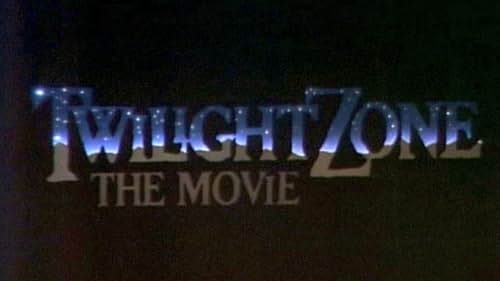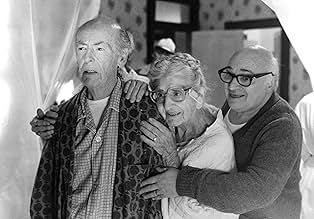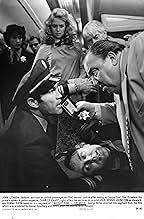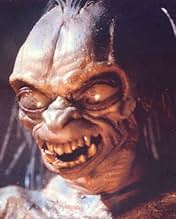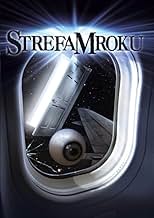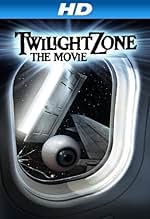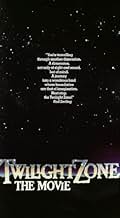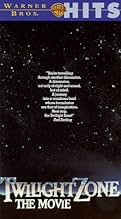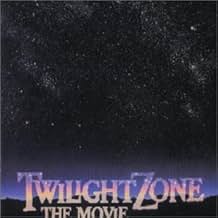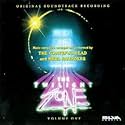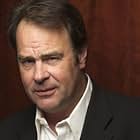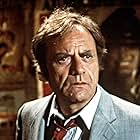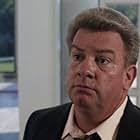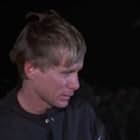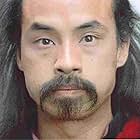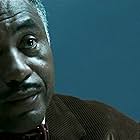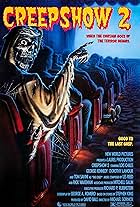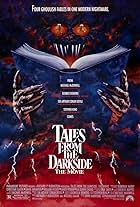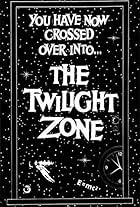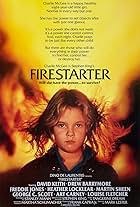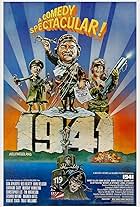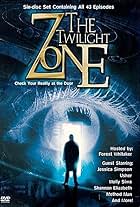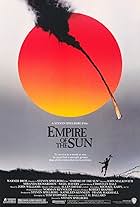Four horror and science fiction segments, directed by four famous directors, each of them being a new version of a classic story from Rod Serling's landmark television series.Four horror and science fiction segments, directed by four famous directors, each of them being a new version of a classic story from Rod Serling's landmark television series.Four horror and science fiction segments, directed by four famous directors, each of them being a new version of a classic story from Rod Serling's landmark television series.
- Awards
- 1 win & 8 nominations
Rainer Peets
- German Officer (segment "Time Out")
- (as Remus Peets)
William S. Taylor
- G.I. (segment "Time Out")
- (as William B. Taylor)
Storyline
Did you know
- TriviaAs Vic Morrow was waiting to film what would turn out to be the scene that killed him, he allegedly said to a production assistant, "I must be out of my mind to be doing this. I should've asked for a stunt double. What can they do but kill me, right?!" While he was filming Dirty Mary Crazy Larry (1974), he insisted on having a $1 million life insurance policy before he would shoot any scenes involving the helicopter in which he was due to ride. He was very insistent, and when asked why, Morrow allegedly replied "I have always had a premonition I was going to die in a helicopter crash!"
- GoofsAn exterior shot of the airplane in Segment #4 shows the landing gear to be in the down position. The pilot later comments that the plane would be landing in twenty minutes, far too long for gear to be down prior to touchdown.
- Quotes
Car Passenger: Hey... you wanna see something really scary?
- Alternate versionsCBS edited 8 minutes from this film for its 1986 network television premiere.
- SoundtracksNights Are Forever
Performed by Jennifer Warnes
Music by Jerry Goldsmith
Lyrics by John Bettis
Produced by Bruce Botnick with James Newton Howard
[Segment #1: playing when William enters the bar]
Featured review
It is very hard to think of another film anywhere that had such a great potential as TWILIGHT ZONE: THE MOVIE had, only to have a senseless and totally preventable tragedy--the deaths of actor Vic Morrow and two illegally hired Asian child actors--mar the impact. Aside from that, and some heavy-handed moralizing that even the original show's creator Rod Serling would have had problems with, this is a fairly good tribute to what was perhaps the best TV series in history.
The prologue (with Dan Aykroyd and Albert Brooks) and Segment 1 are both originals, written and directed by John Landis. The segment deals with a very embittered white man (Morrow) who, after being dealt the denial of a promotion at work in favor of a Jew, unleashes his bigotry at a bar. But when he steps outside, he soon gets a dose of his own bitter medicine: persecution by the Nazis in Vichy France circa 1943; stalked by the KKK in Alabama in 1956; attacked by US soldiers in Vietnam circa 1969. Landis' penchant for hamfisted dialogue and erratic direction dilute what could have been an effective piece; and the tragedy that occurred on his watch taints not only this segment but much of the rest of the movie.
Segment 2, a remake of the 1961 episode "Kick The Can", directed by Steven Spielberg, stars Scatman Crothers as an elderly magician who brings a sense of youth to the residents of a senior citizens home, though over the objections of a veritable old fuddy-duddy (Bill Quinn). Spielberg has often been attacked, mostly unnecessarily, for his tendency toward sloppy sentimentality, but here a lot of the attacks may be justified, despite the best of intentions. He is still my favorite director, but this is one of his weakest.
Segment 3 remakes "It's A Good Life." Under the inventive hands of director Joe Dante (THE HOWLING), this film stars Jeremy Licht as a boy with the power to enslave and terrorize his family when he comes to feel that they hate him. Kathleen Quinlan stars as the teacher who unintentionally gets caught up in the melee, only to wind up volunteering to teach Licht how to better use his powers before they become too big for him to control (a la CARRIE). Dante's use of inventive special effects (courtesy of Rob Bottin) and black comedy enliven this segment, despite some weird overacting from the rest of the segment's cast (including William Schallert and Kevin McCarthy).
Segment 4 is a reworking of the famous episode "Nightmare At 20,000 Feet." With George Miller (MAD MAX) at the director's helm, the segment stars John Lithgow as an incredibly anxious passenger with a morbid fear of flight who constantly sees a monstrous gremlin tearing apart at the wings of his plane during a severe storm. His anxiety explodes into terror and madness, and the other passengers think he is certifiable. But when the plane lands, and the damage is inspected...
The final score on this is that Landis and Spielberg, who also produced, come up with the weaker segments, and Dante and, especially, Miller come up with the best ones. Miller's segment is a truly kinetic piece of suspense and terror, though I did find the little girl (Christina Nigra) an extremely obnoxious and unnecessary presence. Lithgow, who takes over for William Shatner (who had the role in the TV episode), gives a bravura performance, arguably paving the way for his role in "2010" as an astronaut deftly afraid of heights.
Jerry Goldsmith's usual efficient score and some good special effects work help to make TWILIGHT ZONE: THE MOVIE not only an above-average tribute to a great TV show, but also a good anthology film that combines fantasy, suspense, and mystery. It is a shame that the film is tainted by a pointless tragedy. But if one can ignore that, there are rewards to be had by seeing this.
The prologue (with Dan Aykroyd and Albert Brooks) and Segment 1 are both originals, written and directed by John Landis. The segment deals with a very embittered white man (Morrow) who, after being dealt the denial of a promotion at work in favor of a Jew, unleashes his bigotry at a bar. But when he steps outside, he soon gets a dose of his own bitter medicine: persecution by the Nazis in Vichy France circa 1943; stalked by the KKK in Alabama in 1956; attacked by US soldiers in Vietnam circa 1969. Landis' penchant for hamfisted dialogue and erratic direction dilute what could have been an effective piece; and the tragedy that occurred on his watch taints not only this segment but much of the rest of the movie.
Segment 2, a remake of the 1961 episode "Kick The Can", directed by Steven Spielberg, stars Scatman Crothers as an elderly magician who brings a sense of youth to the residents of a senior citizens home, though over the objections of a veritable old fuddy-duddy (Bill Quinn). Spielberg has often been attacked, mostly unnecessarily, for his tendency toward sloppy sentimentality, but here a lot of the attacks may be justified, despite the best of intentions. He is still my favorite director, but this is one of his weakest.
Segment 3 remakes "It's A Good Life." Under the inventive hands of director Joe Dante (THE HOWLING), this film stars Jeremy Licht as a boy with the power to enslave and terrorize his family when he comes to feel that they hate him. Kathleen Quinlan stars as the teacher who unintentionally gets caught up in the melee, only to wind up volunteering to teach Licht how to better use his powers before they become too big for him to control (a la CARRIE). Dante's use of inventive special effects (courtesy of Rob Bottin) and black comedy enliven this segment, despite some weird overacting from the rest of the segment's cast (including William Schallert and Kevin McCarthy).
Segment 4 is a reworking of the famous episode "Nightmare At 20,000 Feet." With George Miller (MAD MAX) at the director's helm, the segment stars John Lithgow as an incredibly anxious passenger with a morbid fear of flight who constantly sees a monstrous gremlin tearing apart at the wings of his plane during a severe storm. His anxiety explodes into terror and madness, and the other passengers think he is certifiable. But when the plane lands, and the damage is inspected...
The final score on this is that Landis and Spielberg, who also produced, come up with the weaker segments, and Dante and, especially, Miller come up with the best ones. Miller's segment is a truly kinetic piece of suspense and terror, though I did find the little girl (Christina Nigra) an extremely obnoxious and unnecessary presence. Lithgow, who takes over for William Shatner (who had the role in the TV episode), gives a bravura performance, arguably paving the way for his role in "2010" as an astronaut deftly afraid of heights.
Jerry Goldsmith's usual efficient score and some good special effects work help to make TWILIGHT ZONE: THE MOVIE not only an above-average tribute to a great TV show, but also a good anthology film that combines fantasy, suspense, and mystery. It is a shame that the film is tainted by a pointless tragedy. But if one can ignore that, there are rewards to be had by seeing this.
Details
- Release date
- Country of origin
- Languages
- Also known as
- Al filo de la realidad
- Filming locations
- 15238 Victory Boulevard, Van Nuys, Los Angeles, California, USA(bar in segment #1; exterior & interior)
- Production companies
- See more company credits at IMDbPro
Box office
- Budget
- $10,000,000 (estimated)
- Gross US & Canada
- $29,450,919
- Opening weekend US & Canada
- $6,614,366
- Jun 26, 1983
- Gross worldwide
- $29,450,919
- Runtime1 hour 41 minutes
- Color
- Sound mix
- Aspect ratio
- 1.85 : 1
Contribute to this page
Suggest an edit or add missing content

Top Gap
What is the Brazilian Portuguese language plot outline for Twilight Zone: The Movie (1983)?
Answer
